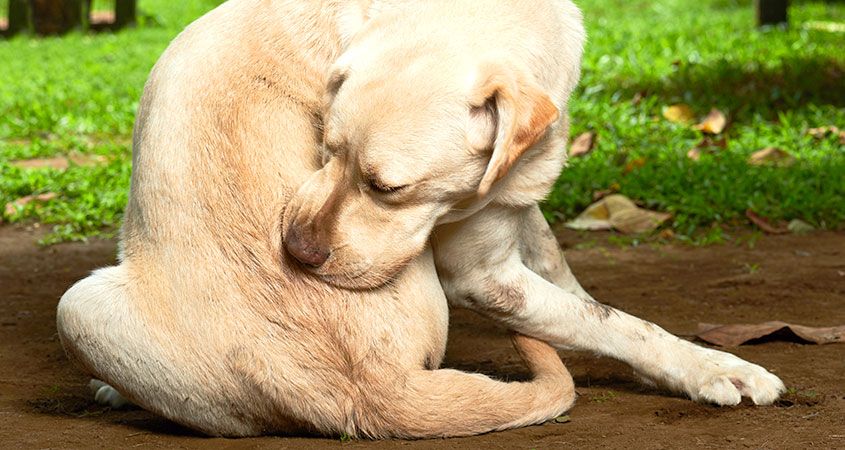The most common external parasite of companion animals
Fleas are the most common external parasite of companion animals. In addition to causing itching and other skin problems, fleas can transmit diseases to animals and people. The majority of the flea population (i.e. eggs, larvae, and pupae) are found off the pet and around the home.
The ideal flea control program uses products that target all of the various stages of the flea life cycle and treats the pet’s environment.
The Life Cycle of the Flea: Ctenocephalides felis
The flea life cycle consists of egg, larval, pupal, and adult stages. Eggs are laid in the hair coat and are designed to fall off your pet and into your home. Larvae hatch from the eggs and develop in a pet’s environment by feeding on adult flea feces (i.e. digested blood) that fall out of the hair coat of the pet. Larvae eventually spin cocoons, often within carpet fibers, for pupation. Pupae are resistant to freezing, drying, and insecticides, and can lie dormant for many months! New fleas develop from pupae and can begin feeding within hours of finding a dog or cat. The entire flea life cycle can be completed in as little as three weeks.
Today’s Flea Control Products
In the past, veterinarians and pet owners had to try to control fleas by treating the environment of the animal for the immature flea stages. This approach was labor intensive and required frequent applications. Although some older flea control products could be applied to pets, these products did not kill fleas quickly enough or were not long-lasting.
Today, veterinarians have some great flea control products in our arsenal. There are now many effective and safe new products to choose from.
Flea Control Recommendations
Treat all pets with a monthly flea control product. Do NOT use permethrin-containing products on cats. As fleas can live indoors even in the winter, your veterinarian may also recommend year-round flea control.
Sometimes a pet’s indoor environment also needs to be treated for fleas using a flea spray designed to quickly kill fleas and stop their reproduction.
To use a spray around your home:
– Remove your pets from the area to be sprayed.
– Wash all bedding.
– Vacuum all carpets and upholstery and then discard the vacuum bag. This will prevent the flea eggs from hatching in vacuum bags and spreading through your home.
– Spray all surfaces until damp to the touch.
Sometimes a pet’s outdoor environment will also need to be treated for fleas. Your veterinarian can recommend a product for you to use or the outdoor environment can be treated professionally by pest specialists.
ALWAYS wait until all surfaces have dried before allowing your pets back into a treated area.
Authour: The VIN Dermatology Consultants
Original Link: Vetrinarian Partner


Recent Comments